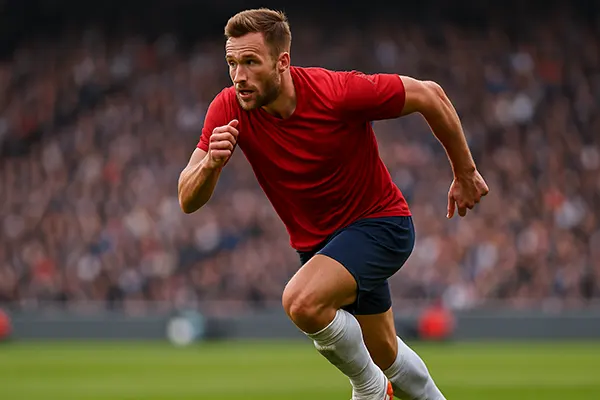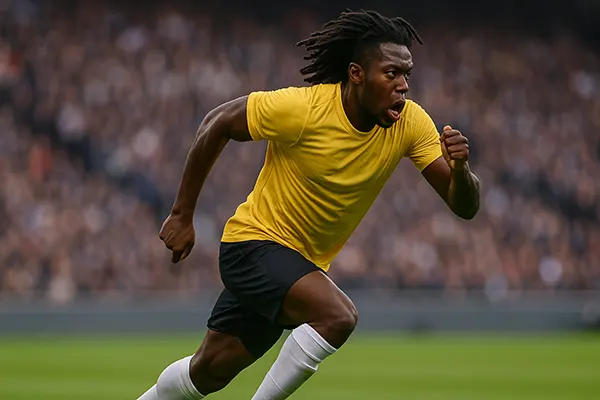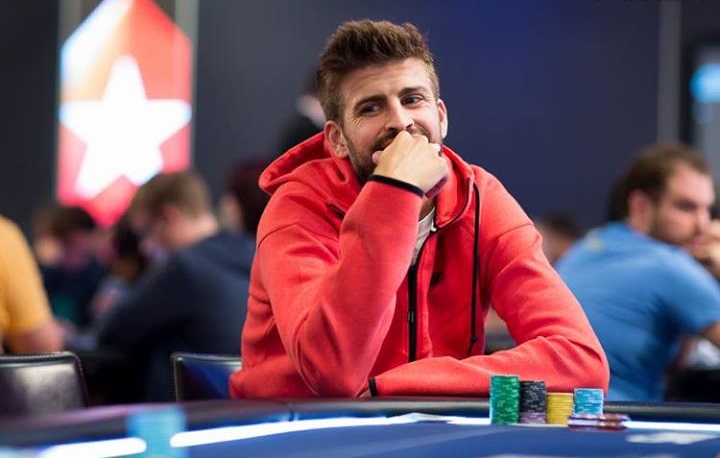Analysis of Physical Endurance of Top Forwards in the 2024/2025 Season

The 2024/2025 football season has showcased a new level of physical performance among elite forwards across Europe’s top leagues. Modern football demands not only technical precision but also exceptional physical endurance, particularly in attacking positions. This article dives into the key metrics — average running distance and high-intensity sprints — to evaluate the stamina of top-performing forwards.
Running Distance: Weekly Consistency and Tactical Roles
One of the most telling indicators of a forward’s endurance is the total distance covered per match. According to Opta data for February 2025, Erling Haaland (Manchester City) averages 10.8 km per match — a significant rise from his previous seasons. His increased movement without the ball reflects City’s press-heavy attacking style and his evolving role in deeper positions.
In La Liga, Antoine Griezmann (Atlético Madrid) remains one of the most active forwards with 11.2 km per match. His hybrid role as a support striker and occasional midfielder naturally requires greater coverage, contributing to Atlético’s counter-attacking transitions. His workload includes both defensive tracking and creative build-ups.
Meanwhile, Harry Kane (Bayern Munich) has shown remarkable adaptation to Bundesliga’s pace, recording an average of 10.5 km per game. His improved mobility is linked to Bayern’s positional play and his frequent participation in link-up phases, pressing and space creation.
Comparison with League Averages
The average running distance for top forwards in Premier League and Bundesliga stands at approximately 9.5 km per match, while La Liga remains slightly lower at 9.1 km. This suggests that elite forwards exceed the positional norms by at least 10–15%. Such deviation often points to greater tactical importance or increased defensive workload.
Interestingly, Serie A showcases a wider variance, with players like Victor Osimhen (Napoli) reaching 10.3 km, while others remain below the 9 km threshold. This reflects the tactical diversity across Italian clubs, where some forwards are target men while others play more dynamic roles.
On a club level, forwards from high-pressing teams — notably Liverpool, Leipzig, and Real Sociedad — consistently report higher-than-average distances. These teams rely on attacking players to initiate pressing, chase transitions, and support possession recycling, thereby increasing their physical load.
Sprint Intensity: Frequency and Acceleration Patterns
While running distance reflects general endurance, sprint data highlights explosive capabilities. Kylian Mbappé (Paris Saint-Germain) leads in this area with an average of 35 high-intensity sprints per match. His ability to maintain frequency into the final minutes exemplifies elite anaerobic conditioning and recovery rate.
Mohamed Salah (Liverpool), despite approaching his 33rd birthday, sustains an average of 30 sprints per game. His style of play — marked by diagonal runs and aggressive pressing — contributes to this high count, underlining his longevity and physical preparation.
In Serie A, Rafael Leão (AC Milan) hits an average of 29 sprints per game, using explosive bursts on the left flank to destabilise defences. His ability to consistently execute sprints throughout 90 minutes highlights his fitness and efficient energy conservation.
Top Performers by Acceleration Range
Analysis of GPS tracking data (StatsBomb, February 2025) reveals that the highest acceleration range — 7.0 m/s² and above — is regularly achieved by players like Mbappé, Leão, and Nico Williams (Athletic Bilbao). These bursts are typically linked to counter-attacking scenarios and last-ditch pressing actions.
What sets these players apart is not only frequency but also the ability to decelerate safely. A high sprint-to-recovery ratio, such as Salah’s 1:1.2, means players recover efficiently between bursts, avoiding fatigue accumulation. This is critical for maintaining threat in later match stages.
In terms of positional distribution, wide forwards and wingers dominate the sprint stats, while central strikers (e.g., Harry Kane, Olivier Giroud) focus more on positional play, pressing triggers and selective sprinting for finishing runs.

Endurance Evolution and Training Methodologies
Endurance development in modern forwards is no longer reliant on long-distance stamina alone. Clubs now integrate advanced sports science — including VO2 max testing, lactate threshold monitoring, and individualised training cycles — to refine performance over 90 minutes and full seasons.
Teams such as RB Leipzig and Arsenal have embraced AI-driven load management systems, adjusting recovery and training protocols in real time. Forwards receive tailored regimens including interval training, neuromuscular stimulation, and sprint-specific drills to maintain explosive output without sacrificing long-term endurance.
Moreover, the increased use of live tracking via GPS vests and heart-rate monitors allows coaching staff to evaluate stress zones during training, ensuring optimal readiness for game demands. This precision helps prevent overtraining while enhancing match-day resilience.
Implications for Tactical Strategy
The physical endurance of forwards increasingly shapes team tactics. Coaches are designing systems where attackers must defend from the front, execute pressing traps, and stretch opposition lines. Therefore, endurance is no longer a bonus — it’s a prerequisite for modern forwards.
As pressing intensity increases, especially in knockout-stage matches, players with elite recovery capabilities gain tactical advantage. For instance, Liverpool’s ability to rotate three high-stamina forwards ensures relentless pressure over 90 minutes.
Looking ahead, physical data may even influence transfer policies. Clubs seeking forwards now prioritise metrics like sprint recovery, lactate threshold tolerance, and consistent distance coverage, ensuring tactical compatibility and reducing injury risks.




